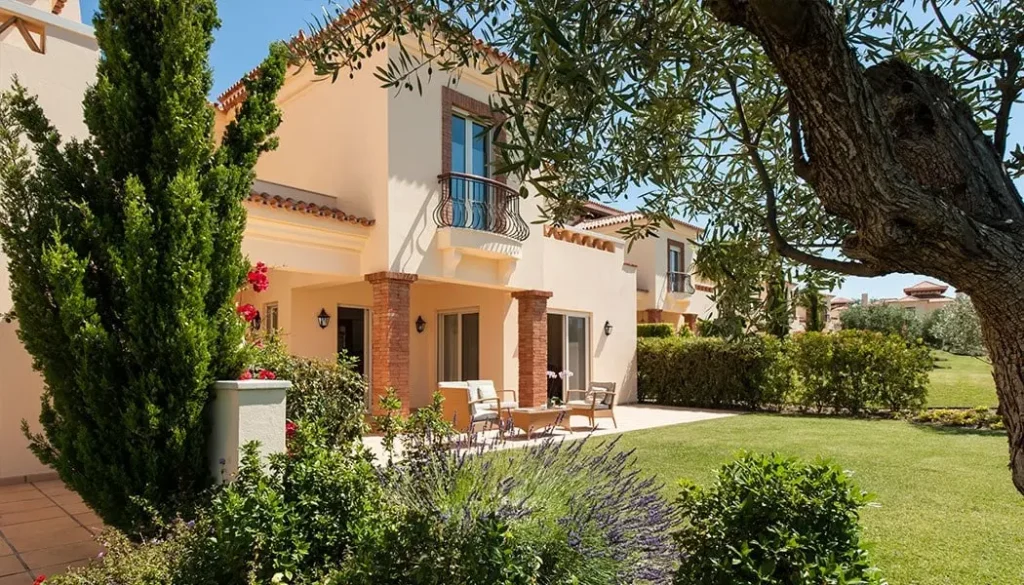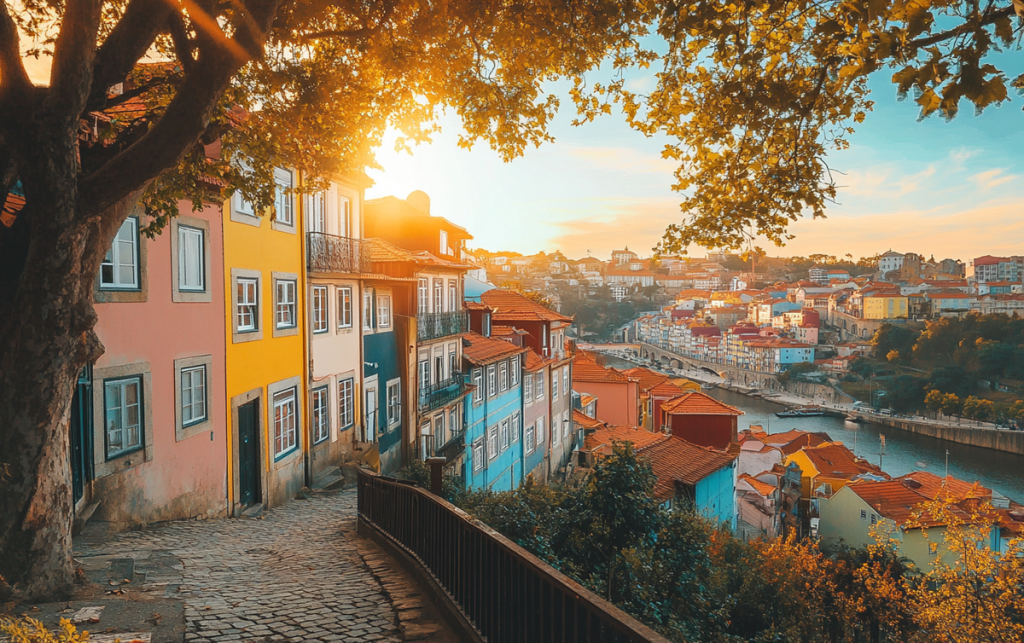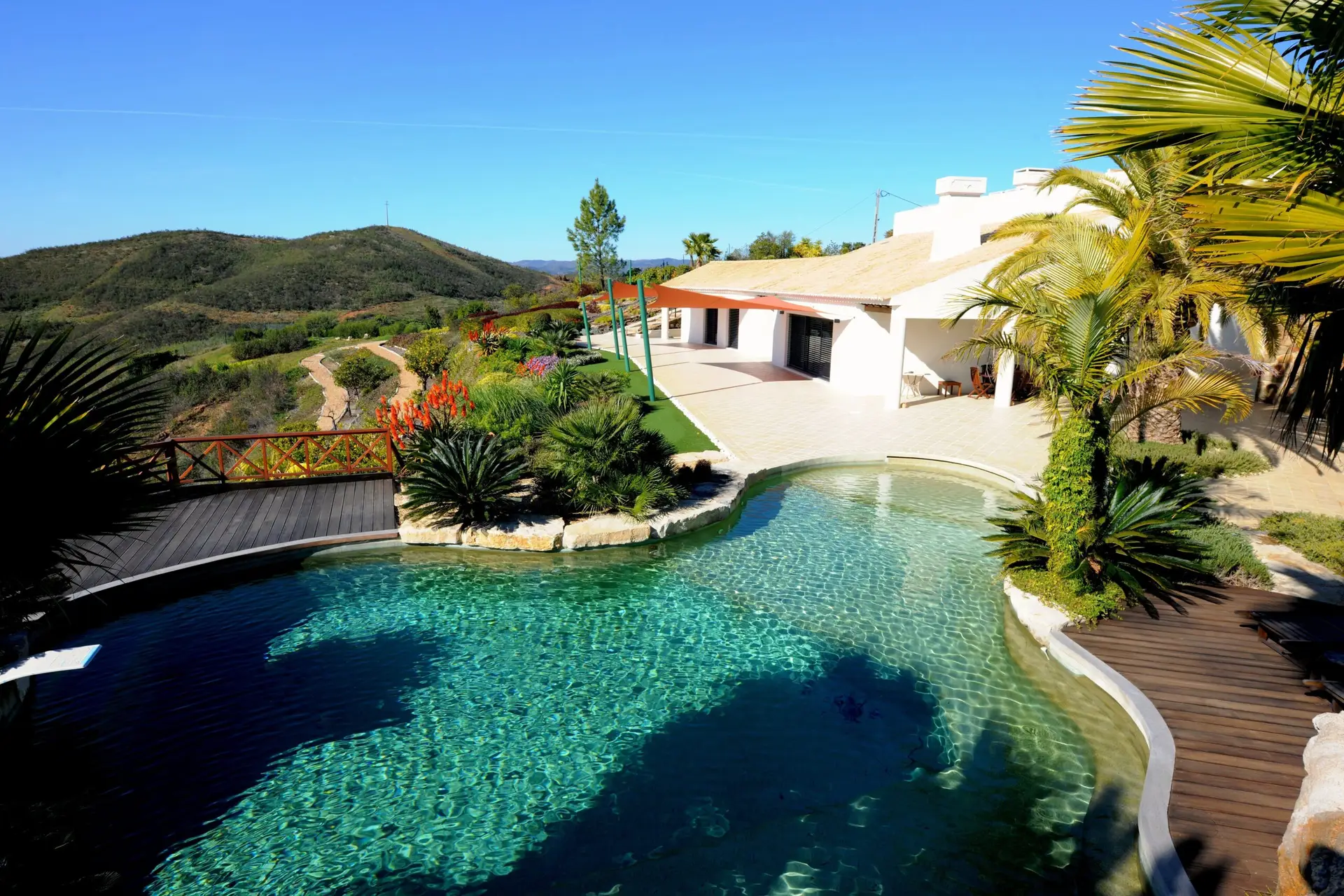With its mild climate, Mediterranean cuisine and unique cultural atmosphere, Portugal is considered one of the most attractive destinations to relocate to in 2025. The country offers a harmonious combination of affordable prices and a high level of comfort. In this article, we will tell you how realistic it is for a Russian to fit into local society, as well as provide information on the cost of living in Portugal.

Why Portugal is attractive
Portugal remains a magnet for expats due to its unique combination of geographical diversity, high standard of living and affordable cost of services. It’s a place where tradition meets modern amenities: in 2025, the country stands out for its developed infrastructure, security, stable economy and warm climate suitable for long-term residence.
Geographical diversity and climate
Srana offers a stunning geographical diversity:
- Famous for its golden beaches and Mediterranean climate, the southern Algarve is ideal for those who appreciate mild winters and warm summers. Albufeira and Lagos are cities where life is relaxed, with cosy cafes, seafood and a measured pace.
-
Lisbon, the country’s capital, is a striking architecture where modern business centres sit alongside historic monuments. The city rises up the hills, offering views of the Tagus River, and the climate remains comfortable all year round. The average temperature in winter is around 12-14 degrees Celsius, while in summer the temperature does not exceed 30 degrees Celsius. Lisbon is the choice of those seeking a balance between career opportunities and cultural leisure.
-
The northern regions of Porto and Braga are characterised by green hills and cooler weather. In Porto, history breathes in the streets: ancient bridges, the Douro River promenade and the famous Port wine. These regions are suitable for those seeking inspiration in silence and nature.
- The central regions, including Alentejo, delight with plains and authentic villages. The central regions of Portugal, including Alentejo, enjoy the plains and authentic villages.
Standard of living and infrastructure
The level of comfort in Portugal remains one of the best in Europe, despite the relatively low cost of living. Developed infrastructure, safe cities and affordable services make the country attractive to families, young professionals and retirees.
Lisbon and Porto have convenient subways, with single fares costing around €1.5 and monthly passes costing €40. Intercity trains connect the major cities, travelling here is more than affordable.
The medical system deserves special attention. Public hospitals provide high-level services, and insurance for residents costs an average of 40 to 70 euros per month. Private clinics offer more flexible conditions, providing a high standard of service. For example, a consultation with a specialist will cost 50-70 euros.
Education in the country is also of a high standard. Public schools offer free tuition, while international institutions like Carlucci American International School of Lisbon offer programmes in English. Higher education is available not only for local students but also for expats.
Security is one of the key factors that make relocation attractive. Low crime rates provide peace of mind for families and the elderly. Combined with a friendly culture and hospitality, this creates an environment where everyone feels comfortable.
The cost of living in Portugal is determined by a combination of high quality services and affordability. The country offers a comfortable environment for reasonable money, making it one of the best choices for emigration.
How much does it cost to live in Portugal?
 For an objective assessment, you should consider the main cost items: rent, food and transport. These categories define everyday spending and help to understand how affordable a country is.
For an objective assessment, you should consider the main cost items: rent, food and transport. These categories define everyday spending and help to understand how affordable a country is.
Renting accommodation in Portugal
In 2025, prices vary depending on the city and location. In Lisbon, where demand for housing remains high, renting a one-bedroom flat in the city centre will cost 1200-1500 euros per month. On the outskirts, a similar option will cost 800-1000 euros.
In Porto, which is considered more affordable, you can rent such apartments for 900-1200 euros in the centre and about 700-900 euros on the periphery. For those looking for economical options – there are studios and rooms priced from 400 euros per month.
Many expats choose the Algarve, where rates are lower. A flat in the centre of the locations will cost around 800-1000 euros. In rural areas of the country, the service is noticeably cheaper – from 300-500 euros.
Factors affecting the cost of renting to live in Portugal:
- Proximity to the city centre.
- The condition of the building and the availability of repairs.
- Type of accommodation: flats, studios or houses.
- Time of year (there is a higher demand for rentals during the summer months).
Food prices in Portugal
Monthly grocery costs for a family of three are 300-500 euros, depending on preferences and choice of shops. In Pingo Doce or Continente supermarkets, prices are stable:
- A litre of milk costs €1.1.
- A kilo of chicken fillet is 6.5-7 euros.
- A loaf of bread costs €1.2.
- A kilo of apples is 1.8 euros.
Local markets, such as the Mercado da Ribeira in Lisbon, offer cheaper fresh fruit and vegetables, especially in season. Dinner in an average restaurant will cost 10-15 euros per person, making café meals affordable for most residents.
Salaries and expenses
The average income of professionals in Portugal is 1100-1300 euros per month. In Lisbon and Porto the salary level is higher than in the provinces – 1500-2000 in IT and financial sector. The minimum salary in 2025 is 850 euros.
The main expenses include rent, food, utilities (about 120 euros per month) and transport (metro pass – 40 euros). For a comfortable stay one person needs about 1500-1800 euros per month, a family of three – 2500-3000 euros.
Total costs: is it worth moving to Portugal from Russia?
Moving to Portugal is increasingly popular among Russians due to its combination of affordable costs and high standard of living. For an accurate assessment, you will need to take into account basic expenses such as rent, food, transport and medical services. Relocation is possible with a relatively small investment if you plan your budget in advance.
Key Points:

- Visa requirements. Russian citizens are required to obtain a D7 permit (for persons with passive income) or a work visa. Simplified conditions apply to freelancers and business owners.
- Choice of region. Lisbon and Porto are suitable for professionals seeking employment with international companies. The Algarve and the central regions are popular with retirees due to their low costs and relaxed atmosphere.
- Language and integration. Despite the popularity of English in major cities, knowledge of Portuguese remains important for full integration.
- Financial Preparation. Rent and other initial costs can hit the budget hard. The average amount needed for a comfortable start is about 5000-7000 euros per person.
Conclusion
 Portugal’s moderate cost of living makes it an attractive place to move to, especially for those who appreciate culture, mild climate and convenience. Lisbon and Porto are suitable for professionals, while the Algarve is for those seeking tranquillity. Relocating will require careful cost planning, but the results justify the means.
Portugal’s moderate cost of living makes it an attractive place to move to, especially for those who appreciate culture, mild climate and convenience. Lisbon and Porto are suitable for professionals, while the Algarve is for those seeking tranquillity. Relocating will require careful cost planning, but the results justify the means.
 en
en  ru
ru  de
de  ar
ar  es
es  nl
nl  hi
hi  fr
fr  it
it  pt
pt  el
el 











